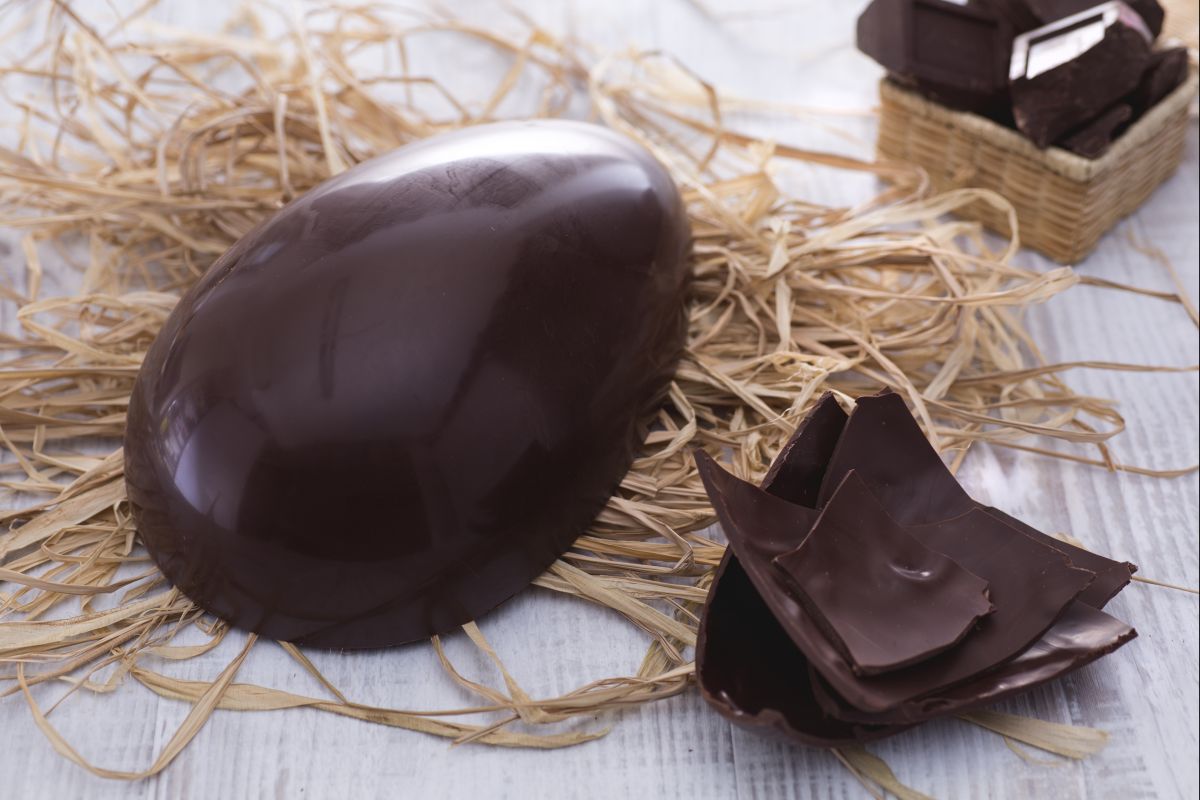Two-flavor Easter egg with dark and white chocolate
- Very difficult
- 60 min
- Kcal 165

Creating a dark chocolate Easter egg isn't just making a sweet treat—it's really more like a cherished tradition during Easter in Italy. Seriously, people love crafting these eggs at home. They feel like they are running their own version of ‘La fabbrica del cioccolato’ right in their kitchens. And look, what makes this so special is cracking open that smooth, glossy chocolate shell to reveal a surprise inside, keeping true to tradition. Some tuck in toys, others might hide a sweet note or even a small piece of jewelry. There's always, and I mean always, excitement about what might be hidden inside.
The homemade Easter egg is all about care and attention—the tempering process requires patience, which is great, but it gives you that shiny, professional look that's just satisfying to see and show off. Plus, there's room to play with flavors, whether you prefer rich dark chocolate or enjoy mixing things up with nuts or a hint of orange zest for a little twist.
And here's the deal: across Italy, regions put their own spin on this treat, but the main idea is the same. The egg must have a crispy, tender shell that snaps when broken. Some add chopped hazelnuts or almonds for extra crunch—especially in the north—while others stick to a classic Easter egg recipe with just pure chocolate.
Pretty much, this is the kind of food that brings out everyone's creative side, especially when families come together to make a bunch of eggs for friends and neighbors. You'll see all kinds of decorations—ribbons, painted details, even sprinkles if kids are involved. It's easy to see why this is one of those Easter chocolate treats people really, really look forward to all year. There's a real sense of fun when you finally open your egg and find something unexpected inside. For anyone thinking about festive Easter dessert ideas, trying a DIY chocolate egg is about more than just eating. It is about sharing joy, a little magic, and maybe a bit of that Italian tradition, too. For sure.
You might also like:

To prepare the dark chocolate Easter egg, start by tempering the chocolate: chop the 70% dark chocolate 1 and melt it in a double boiler (the water in the pot should ideally just touch the bottom of the bowl where you've placed the chocolate) 2; when the chocolate reaches a temperature of 129°F (measure with a kitchen thermometer), dry the bottom of the pot (keep the boiling water in the pot) and pour 2/3 of it onto a marble slab placed on a work surface (the marble slab helps dissolve the chocolate faster and reach the ideal temperature) 3;

Start working the chocolate on the slab with a spatula 4 and a scraper, spreading it over the surface. When it reaches 82°F (always measure with a kitchen thermometer) 5, transfer it back into the bowl where you left the remaining 1/3 of the chocolate and mix 6. The chocolate should reach 88-90°F 7. If at any point the temperature drops too much, keep the double boiler with hot water nearby to slightly warm the chocolate. Conversely, if it's still too warm, repeat the spatula operation on the marble with a small portion of the chocolate.

Pour the chocolate into the 10-inch Easter egg mold 7, spreading it evenly with a rotating motion to make sure it reaches the edges. After one minute, invert the mold onto a tray to collect the excess chocolate. Lightly tap the edges of the mold to remove air bubbles, then let crystallize for about 20 minutes. Once slightly solidified 8, use a scraper to remove the excess chocolate around the edges 9 to refine them. Then, pour the excess chocolate back into the mold, repeating the rotating motion to distribute it evenly. Let it crystallize again for about 20 minutes, then remove the edges as in step 9 if necessary and let the chocolate set.

Pour the excess chocolate back into the mold (10-11), repeating the rotating motion to distribute it evenly. Let it crystallize again for about 20 minutes, then remove the chocolate peaks (as in step 9) if necessary and let the chocolate set for 2-3 hours. If the external temperature is above 68°F, you can place the mold in the fridge. Once well crystallized, you'll notice there is no more chocolate sticking to the mold and you can gently unmold the two halves of the egg by applying slight pressure on the mold 12.

Heat a pan larger than the egg and then place it on the work surface: lay one half of the egg with the edges facing the bottom of the pan and hold for just a moment to slightly warm the edges 13: insert the surprise and join the two halves 14; hold for a few minutes to seal the parts. The dark chocolate Easter egg is ready to be gifted and then enjoyed on Easter day!